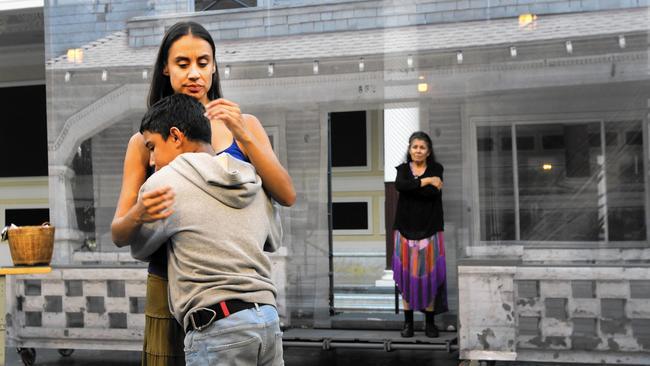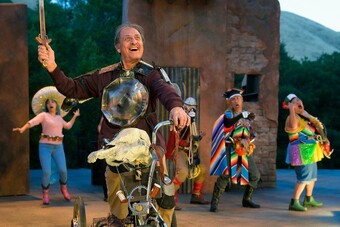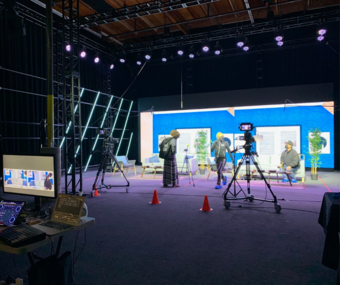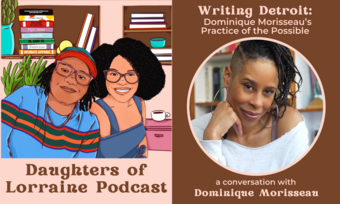Pedagogy Notebook
The Role of Latina/o Adaptations in the Teaching of Classical Theatre
Pedagogy Notebook is a monthly blog series that serves as a pedagogical resource for educators and scholars looking to incorporate Latina/o theatre into the classroom. In Pedagogy Notebook, artists, educators, and scholars share their process and work in the classroom, plus overall reflections on their pedagogy. This series offers a glimpse into different methods of engaging with and teaching Latina/o theatre at the university level.
As a scholar of both Shakespeare and Latina/o theatre, I am often asked about how the disciplines interact with each other, if at all. Academic engagement across so great a time period, let alone cultures and languages, is typically met with a skeptical glance. When I began teaching at the University of Southern California last fall, I was asked to teach a critical studies class on Greek and Roman theatre. Moving backwards in time from the early modern period to antiquity, I questioned if there were a place in such a class for Latina/o theatre.
The work of Latina/o playwrights and other contemporary writers not only served as an access point for engaging classical drama, but as part of a theatrical genealogy of adapting myth that extends over thousands of years.
I assigned twelve Greek and Roman plays that I felt represented the breadth of the surviving canon. As I prepared the lectures, I searched for video clips and images from recent productions, but I found few professional performances of the Greek and Roman plays. What I did find were highly translated productions, those that used the Greek/Roman text translated into English, but also creatively adapted ideas about costuming, the use of the Chorus, and the role of music.
Through exploring those stagings, including Latina/o adaptations, the governing structure of the class began to take shape: the Greek and Roman texts serve as a model for adaptation. The Greeks adapted their myths into dramatic literature, and later Greek playwrights and Roman playwrights adapted from their predecessors. Both Aeschylus and Sophocles wrote versions of the Electra story, for example, and Euripides and Seneca wrote versions of Medea. Adaptation as germane to theatre history begins all the way back with the birth of western drama.
Lectures, assigned readings, and discussions focused on the canon of dramatic literature from the Greek and Roman eras, as well as the changing theatrical practices of the time. But students were also required to read two adaptations and write a response paper for each. I paired each play with an adaptation, including those from Cherríe Moraga, Luis Alfaro, Caridad Svich, Jean-Paul Sartre, Wole Soyinka, Martha Graham, David Rabe, Chuck Mee, and Eugene O’Neill. They could also receive credit for going to the Getty Villa to see Mojada: A Medea in Los Angeles by Luis Alfaro, who students also know as both playwright and as a professor in our department at USC.

Responses to the adaptations raised questions in class discussions on language and politics. One student who read Alfaro’s Electricidad commented on how surprised she was that she understood the play despite not knowing any Spanish. Martha Graham’s Night Journey, a modern dance interpretation of Oedipus the King, baffled some students unfamiliar with modern dance but brought forth a conversation on how to read performance, especially when there is no dialogue and the story of Oedipus is condensed into a dance that runs less than thirty minutes. Comparing Caridad Svich’s Antigone Arkhe, part of the collection Antigone Project: A Play in Five Parts conceived by Chiori Miyagawa and Sabrina Peck, with plays by Karen Hartman, Tanya Barfield, Lynn Nottage, Chiori Miyagawa, and Moraga gave students a clear example of how a variety of female playwrights can adapt the same character into contemporary contexts. The students who saw Alfaro’s Mojada investigated Alfaro’s adaptation of his own play into different communities and contexts. After learning that Alfaro shifted his story from Bruja to Mojada, from San Francisco to Chicago to Los Angeles, one student perceived that all stories change as they travel across spaces, whether in written adaptations or in performance.
The final assignment was a combined creative and analytical project in which the students had to write three to five pages of their own adaptation, eight pages of a critical essay, and draw/design a marketing poster for their show. The creative portion could include dialogue, stage directions, synopses, or a combination of these elements from their adaptation. The analytical portion had to take into consideration at least two other plays read for class. There were some comical adaptations, astute critiques, and clear demonstrations of students’ knowledge of Greek and Roman theatre. Marketing posters signaled that intended audiences ranged from Broadway to Tokyo to one of USC’s black box theatres.
Students performed the same work as their Greek, Roman, and Latina/o predecessors, each taking a different aspect from the story and developing it in adaptation. One student engaged Cherríe Moraga’s humanization of Medea in The Hungry Woman: A Mexican Medea and applied Moraga’s critique of patriarchy to his adaptation. The student wrote that he was “inspired by Cherrie Moraga’s rendition of Medea much more than the Greek or Roman versions of her, as her approachable characterization brings much more pain to killing her son.” He set his Medea in the 1400s in feudal Japan and played on Moraga’s critique of patriarchy. Another student transposed the post-apocalyptic setting of A Mexican Medea to his adaptation set in the present-day transgender community and his protagonist’s displacement in contemporary society. The student shifted Moraga’s positioning of indigeneity to the “agency of destabilizing psycho-pharmaceuticals” that leads his protagonist to destruction.
The work of Latina/o playwrights and other contemporary writers not only served as an access point for engaging classical drama, but as part of a theatrical genealogy of adapting myth that extends over thousands of years. One of the most positive outcomes of the class was that the students ceased to refer to the work of Moraga, Alfaro, Svich, and others as “cultural adaptations” and simply viewed them as adaptations.
For more information on incorporating this work into your class, please see the following resources:
- Resonance Ensemble’s Mission Statement
- “Electric Youth” by Cassandra Johnson in American Theatre
- “A Quilting of Voices: Diversifying the Curriculum/Canon in the Traditional Humanities” by Charlotte Pierce-Baker in College Literature
- Cherríe Moraga’s Personal Website
- Caridad Svich’s Personal Website















Comments
The article is just the start of the conversation—we want to know what you think about this subject, too! HowlRound is a space for knowledge-sharing, and we welcome spirited, thoughtful, and on-topic dialogue. Find our full comments policy here
This is really wonderful, Carla. I do something similar in my graduate Latin American theater seminar (in Spanish), whereby we read the Greek classics and their adaptations in a Latin American context. It would be fascinating to do both: Latina/o and Latin American adaptations, particularly the Medeas and the the Antigones. Very juicy indeed!
Thanks Teresa! And I think the pairing of older and newer texts in your Latin American theater seminar sounds fantastic. Your idea of putting even more adaptations in conversation would make an amazing class (or repertory season!).